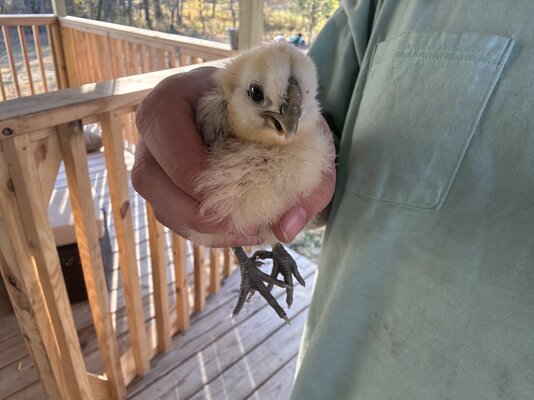KYchickengirl326
In the Brooder
- May 28, 2022
- 16
- 11
- 36
I hatched some babies about three weeks ago. This baby (Silkie x green queen) has seemed to develop scissor beak. I have just now noticed it and it’s been eating and drinking fine. My question is, how do I treat this going forward? I’ve never dealt with this before.






